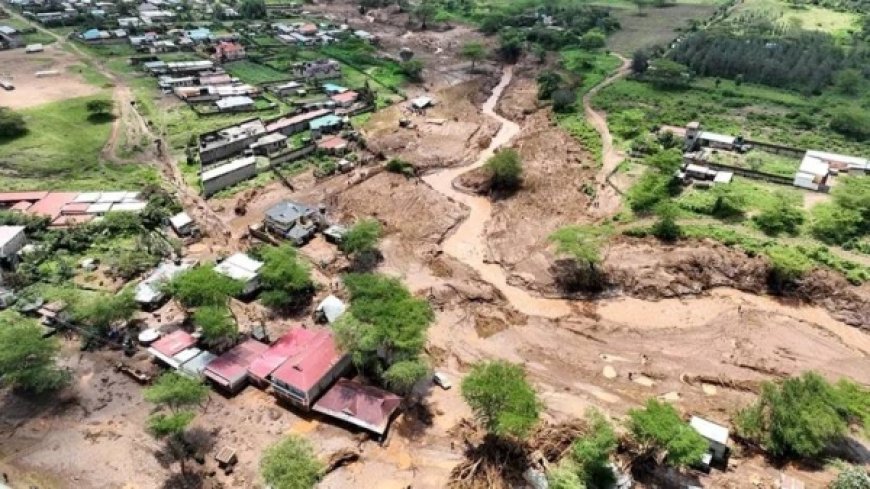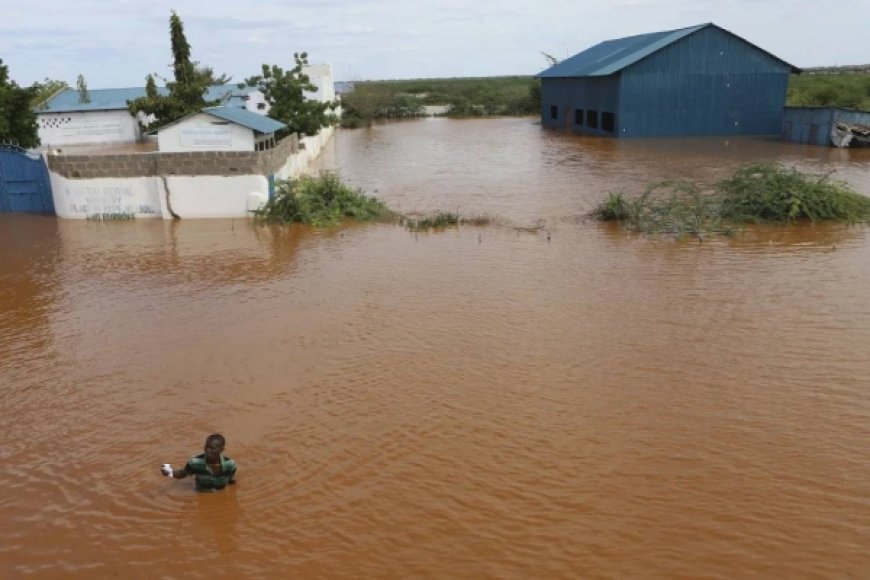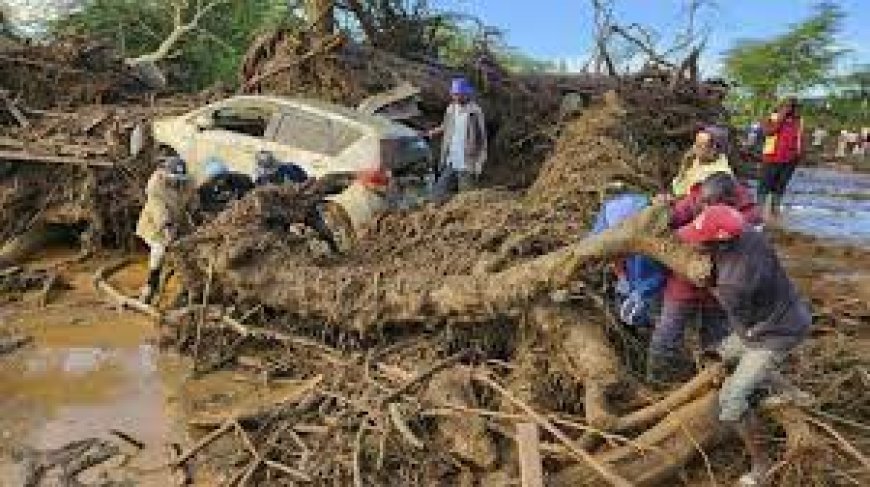Kenya dam burst: Around 50 killed in villages near Mai Mahiu town

ABOUT 50 people have died in Kenya after a dam burst its banks following heavy rains and flooding, a Red Cross official has said, reports the BBC.
People in villages near Mai Mahiu, about 60 km (37 miles) from the capital, Nairobi, were swept away as they slept.
Rescue efforts are continuing to pull people out of the mud, with fears that the death toll could rise.
More than 100 people have been killed in floods that have devastated parts of Kenya in the last month.
A roaring sound woke people up in the early hours of Monday as a tide of water crashed down from a burst dam upriver in the Mai Mahiu area.
Residents spoke of a night of frantic efforts to pull people out of the raging flood and dig them out of the mud.
The Kenya Red Cross has joined search and rescue operations, with its emergency response manager, Anthony Muchiri, telling the BBC that the death toll has risen to 50.
"This is the worst I've ever come across in my career," he said, adding that not only were people's homes swept away, but also their foundations.
Of the bodies recovered so far, 17 were of children, police commander Stephen Kirui said, cited by Reuters news agency.

The small villages of Kamuchiri and Kianugu were among those that bore the brunt of the disaster.
"The water came at high speed from Old Kijabe Dam and washed away many houses and vehicles. We have never seen such devastating floods since we were born here in Mai Mahiu," David Kamau told the BBC.
Another resident, Peter Muhoho, said that most of his neighbours were swept away in Kianugu, a village with about 18 homes.
"I was asleep when I heard a loud bang and screams. Water had flooded the area. We started rescuing people," Mr Muhoho told the BBC.
Pointing to a bag he was holding, Mr Muhoho added: "This bag belongs to a child I knew. He was washed away. I found it [the bag] downstream."
Deden Muiri stood beside his crumpled home, saying he did not know where he would sleep on Monday night, while some of his relatives started washing the mud off the few possessions they had managed to salvage.
The government has delayed the opening of schools across Kenya with more rain expected, according to forecasters.
More than 130,000 people have been displaced by the floods, with many people taking shelter in schools.
Heavy rains have also pounded neighbouring Tanzania and Burundi.

At least 155 people have been killed in Tanzania since January.
In Burundi, nearly 100,000 people have been displaced.
The number of casualties is unclear, but a UN-linked website reports that 68 people were killed in the capital, Bujumbura, on 10 February alone after heavy rains destroyed some 3,500 homes.
The IOD - often called the "Indian Niño" because of its similarity to its Pacific equivalent - refers to the difference in sea-surface temperatures in opposite parts of the Indian Ocean.
During a positive phase, the waters in the western Indian Ocean are much warmer than normal and this can bring heavier rain regardless of El Niño.
However, when both a positive IOD and an El Niño occur at the same time, as was the case last year, the rains in East Africa can become extreme.
One of the strongest positive IOD patterns on record coincided with one of the strongest El Niño patterns in 1997 and 1998, with severe flooding reported. These caused more than 6,000 deaths in five countries in the region.
